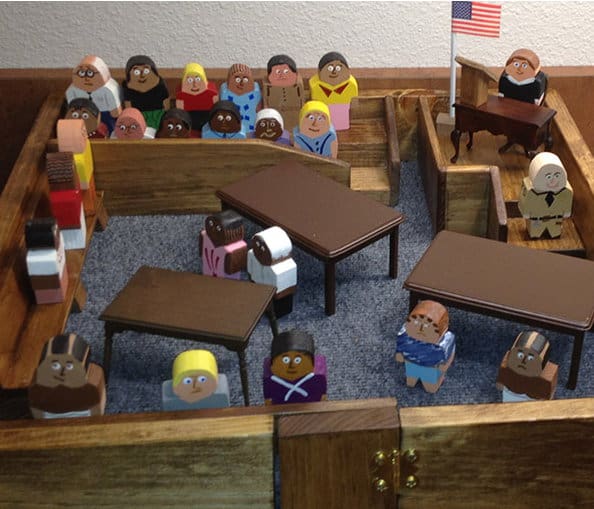Marriage is often considered a lifelong commitment, but unfortunately, not all marriages last. Divorce is a reality that many couples face, and it can be a difficult and emotional process. The question of how many marriages end in divorce is a common one, and it’s important to understand the statistics and trends surrounding this topic.
According to recent data, the divorce rate in the United States has been declining in recent years. In 2021, there were a total of 689,308 divorces, which is a decrease from previous years. However, divorce is still a common occurrence, and it’s estimated that around 44.6% of marriages will end in divorce. This means that nearly half of all marriages will not last until death do us part.
There are many factors that can contribute to the breakdown of a marriage, including financial issues, infidelity, and communication problems. While divorce can be a difficult and painful process, it’s important for couples to understand their options and seek support if they need it. By understanding the statistics and trends surrounding divorce, couples can make informed decisions about their relationships and work towards building a strong and lasting partnership.
Divorce Rates in the United States
Divorce is a common phenomenon in the United States, and it affects many people’s lives. This section will provide an overview of divorce rates in the United States, including the crude divorce rate, divorce risk, and divorce statistics.
Crude Divorce Rate
The crude divorce rate is the number of divorces per 1,000 people in the population. According to the CDC, the crude divorce rate in the United States was 2.5 per 1,000 population in 2021, based on data from 45 reporting states and D.C. This rate has been relatively stable over the past few years.
Divorce Risk
The divorce risk is the probability that a marriage will end in divorce. According to the Pew Research Center, the divorce risk varies by demographic factors such as age, education level, and race/ethnicity. For example, the divorce risk is higher for people who marry at a younger age, have a lower education level, and are Black or Hispanic.
Divorce Statistics
The U.S. Census Bureau and the American Community Survey provide data on divorce rates and trends in the United States. Here are some key statistics:
– In 2021, there were a total of 689,308 divorces in the 45 reporting states and D.C.
– The divorce rate was highest among people aged 25-39.
– Women file for 66% of divorces.
– The median length of marriage before divorce is 8 years.
It is important to note that divorce rates and risk can vary widely depending on individual circumstances, such as income, employment status, and personal values. While divorce can be a difficult and emotional experience, it is not necessarily a negative outcome for everyone involved.
Overall, divorce rates in the United States are relatively stable, and divorce risk varies by demographic factors. Understanding the trends and statistics related to divorce can help individuals make informed decisions about their relationships and future.
Reasons for Divorce
Divorce is a complex and difficult process that affects many couples. There are many reasons why couples choose to end their marriage. Some of the most common reasons for divorce include lack of commitment, infidelity, domestic violence, financial problems, substance misuse, and religious differences.
Lack of Commitment
Lack of commitment is one of the most common reasons for divorce. When couples do not feel committed to each other, they may feel that their relationship is not worth fighting for. This can lead to a breakdown in communication and a lack of effort to work through problems.
Infidelity
Infidelity is another common cause of divorce. When one partner cheats on the other, it can be difficult to rebuild trust and move forward. Infidelity can also be a sign of deeper issues in the relationship, such as a lack of emotional connection or communication.
Domestic Violence
Domestic violence is a serious issue that can lead to divorce. When one partner is abusive towards the other, it can be difficult to maintain a healthy and safe relationship. Domestic violence can take many forms, including physical, emotional, and sexual abuse.
Financial Problems
Financial problems can also be a major cause of divorce. When couples are struggling to make ends meet, it can put a strain on their relationship. Financial stress can lead to arguments and a lack of communication, which can ultimately lead to divorce.
Substance Misuse
Substance misuse is another issue that can lead to divorce. When one partner is struggling with addiction, it can be difficult for the other partner to maintain a healthy relationship. Substance misuse can lead to a lack of trust, communication, and emotional connection.
Religious Differences
Religious differences can also be a factor in divorce. When couples have different beliefs, it can be difficult to find common ground and maintain a healthy relationship. Religious differences can lead to arguments and a lack of understanding, which can ultimately lead to divorce.
Overall, there are many factors that can contribute to divorce. It is important for couples to communicate openly and honestly with each other to try and work through any issues they may be facing.
Marriage and Divorce
Marriage is an important institution in society, but it is not always a lifelong commitment. Divorce is the legal dissolution of a marriage, and it has become increasingly common in recent years. In this section, we will explore some statistics related to marriage and divorce.
Marriage Rate
According to the CDC, the marriage rate in the United States was 6.0 per 1,000 total population in 2021. This means that for every 1,000 people in the population, six got married. The number of marriages in the United States was 1,985,072 in 2021.
Average Marriage Length
The average length of a marriage that ends in divorce is 8 years. However, this number can vary widely depending on factors such as age, education, and income. Couples who get married at a younger age, for example, are more likely to get divorced than those who get married later in life.
Second Marriages
Second marriages are more likely to end in divorce than first marriages. According to Psych Central, the divorce rate for second marriages is around 60%. This is compared to a divorce rate of around 44.6% for first marriages.
Third Marriages
The divorce rate for third marriages is even higher than for second marriages. According to Verywell Mind, the divorce rate for third marriages is around 73%. This is a significant increase from the divorce rate for first marriages.
Gray Divorce
Gray divorce refers to the phenomenon of older couples getting divorced. According to Forbes Advisor, the divorce rate for people over 50 has doubled since the 1990’s. This trend has been attributed to a variety of factors, including longer life expectancy, changing gender roles, and increased financial independence for women.
In conclusion, marriage and divorce are complex topics with many factors to consider. While divorce rates have increased in recent years, it is important to remember that every marriage is unique and that divorce is not always the best option.
Couples Therapy
Couples therapy is a type of psychotherapy that aims to help couples resolve conflicts and improve their relationships. It can be beneficial for couples who are experiencing problems in their marriage, such as communication issues, infidelity, or financial problems.
Open Communication
One of the key components of successful couples therapy is open communication. Couples who are able to express their feelings and thoughts openly and honestly are more likely to resolve their conflicts and improve their relationship. The therapist can help the couple learn effective communication skills, such as active listening, expressing emotions, and validating each other’s feelings.
Respect
Respect is another important aspect of couples therapy. Couples who show respect for each other are more likely to have a successful therapy experience. The therapist can help the couple learn how to show respect for each other’s opinions, values, and feelings. This can include setting boundaries, avoiding name-calling or belittling, and acknowledging each other’s strengths.
Choosing the Right Therapist
Choosing the right therapist is crucial for a successful couples therapy experience. A therapist who is trained in couples therapy and has experience working with couples can help the couple identify the underlying issues that are causing problems in their relationship. The therapist can also help the couple develop a plan for resolving conflicts and improving their relationship.
During couples therapy, the therapist may use a variety of techniques, including cognitive-behavioral therapy, emotion-focused therapy, and the Gottman method. The therapist may also assign homework, such as practicing communication skills or participating in activities that can help strengthen the relationship.
Overall, couples therapy can be an effective way for couples to improve their relationship and resolve conflicts. However, it is important for both partners to be committed to the therapy process and willing to work on their relationship.
Conclusion
In conclusion, divorce rates have been a topic of interest for many years. While there is no denying that divorce is a difficult and emotional experience for those involved, it is important to understand the facts and figures surrounding this issue.
According to the American Community Survey data from the Census Bureau, in 2019, only 7.6 out of 1,000 marriages resulted in divorce. This is a significant decrease from previous years and indicates that fewer marriages are ending in divorce than before.
However, it is important to note that divorce rates vary depending on several factors, including age, education, and income. For example, individuals who marry at a younger age or have lower levels of education and income are more likely to experience divorce than those who marry later in life or have higher levels of education and income.
It is also worth mentioning that second and third marriages have higher divorce rates than first marriages. According to Forbes Advisor, 67% of second marriages end in divorce, and 73% of third marriages are dissolved.
Overall, while divorce rates have decreased in recent years, it is still a significant issue that affects many families. It is important to approach this issue with sensitivity and understanding, and to provide support and resources for those who are going through this difficult experience.





